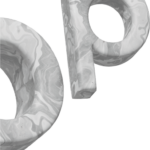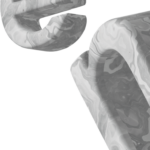

Set up your shop
Create my project

How to start a retail clothing store
13 January 2023
One of the most important things when deciding to open a retail clothing store is who your target market is. Do you want to sell clothes to fitness enthusiasts, teenagers or older people? This will determine your brand and product range.
There are lots of clothing websites and bricks and mortar stores out there and the success of your business will depend on you finding a niche market, creating a solid business plan and effective marketing. Are you thinking of setting up a retail clothing store? Read this article for all you need to know.
Find your business niche
What are you going to sell?
Profitable small business ideas start by coming up with a unique idea. You need to decide which niche market you want to sell to and review the market. For example, do you plan to market sports clothes, prom dresses or babywear? Once you have decided on your niche you can focus on the products and how to differentiate from your competitors.
Choose a theme
The niche you choose will help you design the theme of your store, whether you’re starting an online clothing store or selling from physical premises. You need to give each customer an enjoyable shopping experience that makes yours the go-to store for their clothing purchases.
Identify your target audience
You can't sell everything to everybody
A business start up has to understand who its target audience is. The key factors to consider are:
- Age group
- Gender
- Style/theme
If you decide to promote clothing to young families struggling with the cost of living crisis you’ll be selling cheaper items than those aimed at older people who may have more disposable income. Try not to mix markets – focussing on a niche makes you look like a specialist.
Use your experience
Combine any experience you already have in the clothing market when you identify your audience. Have you worked with sustainability, do you understand drop shipping, have you ever purchased from wholesale clothing stores online?
Write a business plan
What does a business plan include?
This is one of the most valuable parts of setting up a retail clothing store. Your business plan should detail the short and long term goals of the store and identify:
- Business goals and overview
- Market analysis
- Product offering
- Marketing strategy
- Operational needs
- Financial analysis and forecast
- Staff/management roles
Why do I need a business plan?
The business plan is a core part of your strategy and serves as a document to keep you on track and also to present to potential investors or banks if you’re looking for financial back-up.
The business plan should be reviewed and updated at least every three months to ensure you are meeting your targets. A business plan can be flexible – if an idea didn’t work you can come up with an alternative. The secret is perseverance and to never give up.
Perform a competitor analysis
Keep an eye on the competition
Whether you have a store in your local town or online it’s essential you know who your competitors are and what inventory they’re carrying. Before you set up your store, monitor the competition over a period of months and at crucial times like during seasonal sales or when they introduce new ranges.
Never be more expensive than the competition
You also need to monitor competitor pricing, particularly if you’re buying from a wholesaler and selling the same or similar products. If they’re selling a line of t-shirts at £4.99 yours should be cheaper or the same, but not over £5. There’s also something psychological about pricing – £1.99 sounds better than £2.
Register your business
Company registration
Depending on whether you intend to be a sole trader, limited company or partnership, you may need to register your business if you are based in the UK. Sole traders do not have to register with Companies House until they have earned more than 1k in a tax year.
If you have a physical store you will also have to consider if you need any licences, such as health and safety certificates. This link tells you all you need to know about registering a business in the UK, including what to do if you are selling online.
VAT registration
As part of your business accounting you’ll need to register your business for VAT if you’re based in the UK. This is because you have to charge VAT on products you are selling in clothes stores and pay this back to the Inland Revenue.
Secure financing
How to get financed
If you’re not lucky enough to have a large cash sum for your clothing store, the business finance will need to come from elsewhere. The best idea for this is in the form of an investor, a startup business loan from a bank or a business angel.
If you decide to apply for a business loan you should be clear on which will best suit you. There are main types of business loan:
- Secured – when you borrow money against your assets, such as a property you own or a vehicle.
- Unsecured – when you borrow money without putting up assets as security.
- Peer-to-peer – a popular choice for start-up retails to borrow money from an individual, a group or another business.
- Government-backed start-up loans – for UK-based businesses wanting to borrow between £500-£25,000.
- Personal – borrowing from a bank and only advisable for small amounts.
Before agreeing to finance be sure you understand the terms of payment and interest rates, or you could end up losing your business.
Read this informative article on business loans to find out more.
The costs
Being upfront and transparent about the costs to set up and run your clothing store will help the potential investor or bank make a decision. You should provide them with a detailed plan of projected costs over at least the next 12 months, that includes:
- Rent of premises
- Utilities
- Equipment and shopfitting
- Business registration
- Insurance
- Stock
- Transport and delivery costs
- Staff
- Marketing
Not all of these costs will apply, especially if you are opening an online clothing store, but you should consider all of them in case they are relevant.
Find your storefront
Physical premises or online?
The location of your shop will depend on whether you’re looking at businesses to start from home, in which case the store will be online, or want to open a bricks and mortar store. Either way, the first impression of your store is the one that will attract customers, whether it’s a shop window or on the Shopify platform.
How to make your storefront stand out
Your storefront reflects your brand and is a window into what’s inside. How are you going to tempt people in? This is where clever marketing comes into play. Both a website and a shop window should be enticing, free of clutter and look stylish. Cheap posters plastered over the glass or pages advertising special offers can downgrade your business image. Of course you can still run special offers, but they should be presented in a professional way.
Purchase and price your inventory
When to buy stock
Once you have the finance in place you can start to buy your stock. This should be done in good time, but not too early as you’ll lose money on stock that’s sitting around while you’re setting up your store. This particularly applies to seasonal stock – if you’re ordering summer clothes and beachwear, you will need to do this well in advance, so you don´t have an out-of-stock situation during the peak sales period.
It’s also important to anticipate the sales you can achieve during specific events that apply to your clothing range. For example, if you’re selling dressing up costumes you will need to order in time for Halloween, Christmas clothing has to be in stock well before the season to take advantage of present-buying and if you plan to run promotions during Black Friday and Cyber Monday you’ll need to order extra merchandise.
You should also monitor sales of sizes, colors and styles to ensure you order replacements and are never out-of-stock. If medium-sized dresses sell better than small or large t-shirts are more popular than extra-large make sure your stock-holding reflects these trends . You need to study the demand to ensure that you create cost-effective supply.
Who to buy from
You may choose to buy your inventory from wholesale clothing suppliers or direct from clothing manufacturers. It’s always a good idea to visit your suppliers to ensure the clothing is of good quality. You could also visit clothing suppliers at trade shows, which is also a way to meet representatives in person and build a working relationship.
Market your store
Have a solid marketing strategy
Promoting your brand and fashion range is the next step. You will need a marketing plan to follow to ensure you reach potential customers. This should include:
- Presence on social media
- A blog using SEO (search engine optimisation)
- Email marketing
- Targeted advertising
- Special offers and promotions
- Quality photographs on the website
Successful marketing also means offering a wide range of products to give your customers plenty of choice. Ordering your stock from the thousands of products on the Ankorstore marketplace allows you to offer a breadth of range as minimum orders are only €100 per brand.
You can also take advantage of our Brand Accelerator Programme which promotes your shop when you refer new retailers to us. For more information visit the Brand Accelerator Programme page.
Maximise your online presence
With so many people using social media it makes sense to offer your products online, even if you have a bricks and mortar boutique. Use Instagram to post photos of people wearing the clothes, make YouTube videos and create content to engage your audience. People also want to know how a garment will look on them, so consider adding a virtual fitting room to the website.
Are you considering setting up a retail clothing store? Why not take a look at the free Ankorstart programme which can guide you through the steps of setting up a retail store.
FAQs
Are clothing websites difficult to set up?
No. You can either set up your own website or use a platform like Shopify, which contains many options to set up unique clothing websites.
How do I come up with a name for my business?
The best way to come up with business name ideas is to brainstorm words linked to your brand. Write down all the words you can think of related to the product category, no matter how silly they seem. Then you can gradually pick out the names that don’t work and the one you like.
Why do I need a marketing plan?
Your marketing plan will help you identify your target market and how to attract customers. It will also show you how much you need to spend on marketing.
How can Ankorstore help me set up a retail clothing store?
We offer a free programme to give you advice and guidance on setting up a store – Ankorstart. From which products to select to how to launch your business, we want you to succeed.
Related posts "Create my project"

Here are a few pieces of advice to help you understand which are the main steps to follow while deciding the layout of your store.

Are you planning on starting a business in retail? Before you dive in, it’s crucial to conduct market research. This article will walk you through the process of why and how to conduct market research effectively, ensuring your retail business idea is built on a solid foundation of market insights and data-driven decisions.

For entrepreneurs opening a shop, designing a compelling brand identity is crucial to stand out from the competition.
This article explores how thoughtful product selection, marketing strategy and customer experience can boost sales and strengthen brand image.

We’ll take a deep dive into market research, taking a look at primary and secondary sources and how you, as a small retail business owner can conduct your own market research, as well as why you should!


